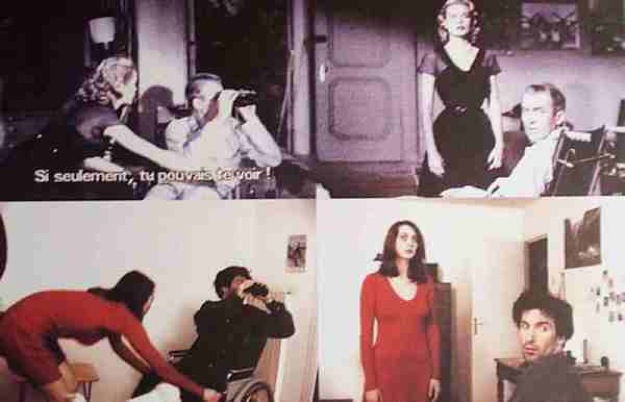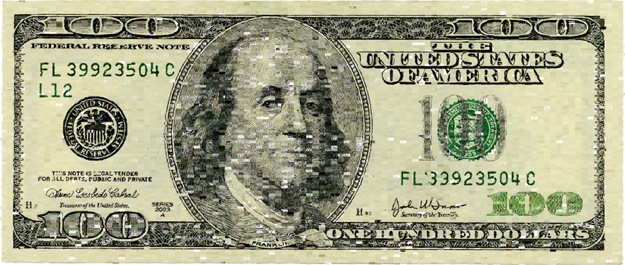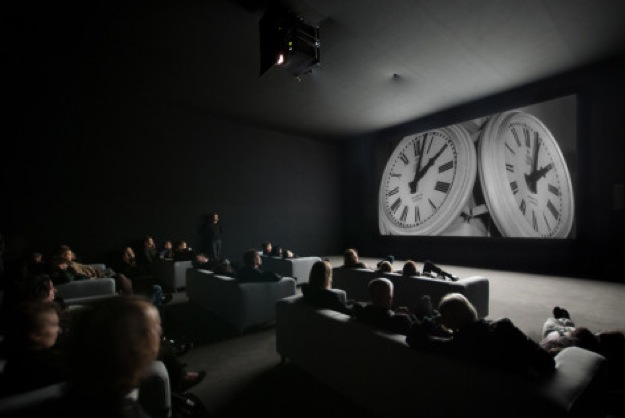Media & culture researcher and artist Eduardo Navas classified three different kinds of remix (extended, selected, reflexive) based on music and then mapped those on art history in his Remix Defined. Although his definitions look mind-opening to a certain degree, I think it’s hard to create a one-to-one mapping from remix practices in music to contemporary art, partly because the means of production have become fairly complex in the recent decades in all cultural fields. Remix is no longer limited with cutting, pasting, subtracting, adding, rearranging but can work across media and across different fields, methods or systems – deep remixability as Lev Manovich calls it. In many cases we can see remix, reenactments, remakes, variations and recontextualizations being combined with surprising results, thanks to the vast amount of information available on the Web as well as the variety of methods to process that information.
A good commentary on this subject is Oliver Laric‘s Versions (2009). Laric created a video entirely made of found material from the Web to turn it into a narrative about versions, sampling, Internet memes and originality. Then two other versions of the same video are made, both as a reference to music singles as well as comments on the fact that the piece itself has no originality and can mutate to different variations. One of them features the artist Guthrie Lonergan as The Internet which humorously points to the merging of the individual and collective creativity.
Departing from these changes happening in cultural production, I attempt to group here different approaches to remake, hoping that this would also partially reflect the conditions that sparked artists’ interest in these similar yet distinct modes of (re)production.
Reenactment-based remakes:
In 1995, Pierre Huyghe created “Remake” in which the every scene of Hitchcock’s “Rear Window” is re-enacted by amateur French actors. The classic Hitchcock film was moved from the realm of the movie studio to the public in the form of a script that can be forever replayed. This project can be seen as a precursor of the idea of the common people becoming celebrities. At the same time it creates an alienation effect that makes the viewers focus on the way the production is made rather than being engaged with the story.

King (a portrait of Michael Jackson) was a multiple-screen video installation by Candice Breitz in which 16 fanatic fans of Jackson were given the opportunity to perform the entire Thriller album in a professional recording studio. Breitz recruited participants via advertisements on Michael Jackson online fan sites and in newspapers and magazines. Most of her work looks at the stereotypes and visual conventions in film and popular culture.
Phil Collins created a video triology called The World Won’t Listen (2005), featuring fans of the British band The Smiths performing karaoke versions of tracks from their 1987 compilation album “The World Won’t Listen”. Different cultures and ages create different versions of the available material. Similar to Breitz’s piece, a committed group of people sing and perform to their favorite lyrics while placing it to a global context.
Remakes based on crowdsourcing:
In addition to the classic way of hiring people, some artists started to use the Internet as a means for crowd-sourcing.
Paul Slocum‘s project You’re Not My Father (2007), commissioned by Turbulence, is another example of remake in contemporary art. Remakes of a scene from “Full House” featuring Candice Cameron and Dave Coulier with the help of actors and fans hired online. The new versions take place in a variety of places such as a photocopy depot, an actors studio, suburban homes, none matching the exact rhythm of the original dialog delivery. It is different from Huyghe’s remake in the sense that the actors are hired by using the Internet and several different variations are made. The piece also reflects on the new ways of production in the networked culture.
Man With A Movie Camera:The Global Remake by Perry Bard was a participatory video project shot by people around the world to interpret Vertov’s 1929 classic film Man With A Movie Camera. They sent the videos to the artist who used custom software to sequence and stream the video. As the same shot can be uploaded more than once infinite versions of the film are possible. Using a source where many cinematic techniques were experimented with for the first time, Bard attempts to take those further and looked into possibilities of creating narratives in a networked society.

Not only videos, but many kinds of other works are made by artists using crowdsourcing, one of them being Ten Thousand Cents (2007-2008) by Aaron Koblin and Takashi Kawashima. They used Amazon Mechanical Turk to get 10,000 workers (referred as “anonymous artists”, maybe to make the hierarchy that exists within this process less apparent – but this is a different issue) to draw small pieces of a $100 bill, eventually remaking the image of the bill. Similar to Bard’s project but preferring to focus on the digital and networked production rather than cinematic production, Ten Thousand Cents also questions the economic aspect of crowdsourcing and digital labor.
Readymade Dictionary of the Author by .-_-. refers to Roland Barthes‘ essay “The Death of the Author” by taking a meta-level approach to remakes and attempts to create a free/open-source dictionary consisting of short video samples of people speaking single words. This is different than the other approaches in focusing on tool-creation rather than product-making, thus commenting directly on the idea of remix, remakes, originality and intellectual property.
Video collages to remake an existing work
In year 2007, (and later as a variation in 2008) Oliver Laric made 50 50 where he put together fifty home videos of people rapping along to 50 Cent songs to create a whole piece. This can be described as a remake made of exiting remakes of the same subject or better a closed-loop mashup where the already existing variations, versions, remakes are sampled and used to reconstruct the same piece again. Such a complex process can only be possible with the excessive but accessible material available online as well as the new way of creative consumption of cultural material.
Although not being closed-loop, a different and relatively new form of mashups is a combination of remakes and sampling: An original work of which a variation is recreated entirely from samples used from other sources. One of the remarkable examples for this is Cory Arcangel‘s series Arnold Schoenberg, op. 11 I, II, III – Cute Kittens (2009), a remix which shows Arnold Schoenberg’s “Drei Klavierstücke, op. 11 I, II and III” played by cats on pianos, entirely made of found footage of cats on online videos.
Imitating a real system using remix:
This isn’t exactly a remake but more like a kind of representation that is closely tied to remakes and remixes. A well known example of this group is Christian Marclay’s The Clock (2010), a 24-hour single channel video consisting of thousands of fragments from movies where the clock in the scene shows the exact time at the moment. Being highly reliable to the vast amount of information available today, this approach takes images, videos or sounds and uses them for a different specific purpose, in a way to demonstrate what unlimited access to audio-visual information can do while also questioning autonomy of imagery.

I also have a personal interest in this type of production, but with a slight difference: Remix or remake created using intelligent software. This makes a further comment on the amount of information we have after the Internet: We also have increasing amount of computing power and machine intelligence which can even automate the process of remix. I incorporated this approach in Movie Mirrors (2009-2010) where a single film or a collection of trailers serve collectively as a mirror where the viewer can see his or her movement reconstructed from existing images.
The act of representing a real system by using collected samples from unrelated sources are similar to what Duchamp described as reciprocal readymade: “using a Rembrandt as an ironing-board”. Instead of taking an artwork and using as an everyday object, samples from cultural products are rearranged to serve a simple everyday function such as that of a clock or a mirror. Another way to describe it would be: the act of recycling the cultural memory in order to represent the present.
Haley
Do you happen to know a way to view Pierre Huyghe’s “Remake”? Searching websites in hope to find it. Thanks.